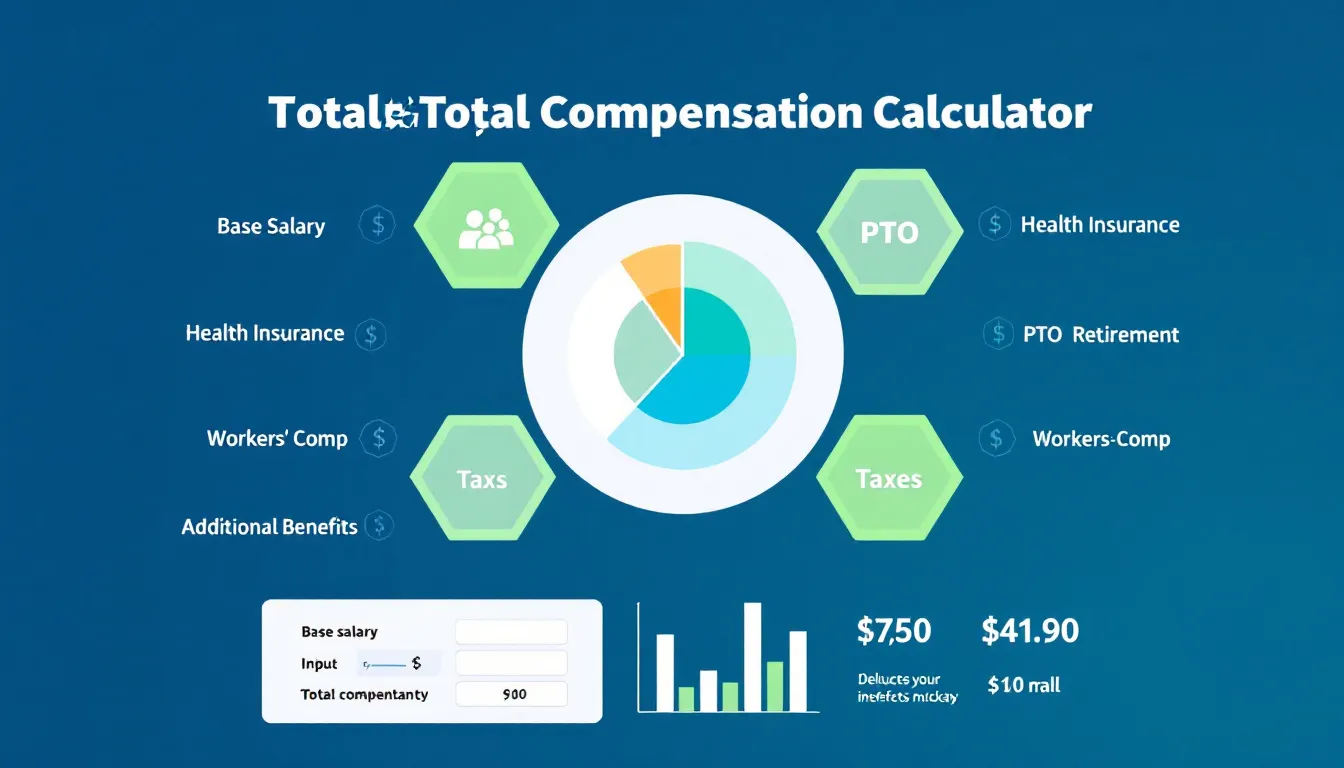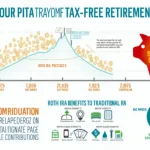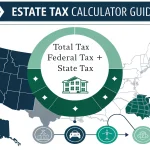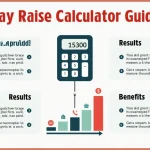Employee Benefits Cost Calculator
Is this tool helpful?
How to Use the Employee Benefits Cost Calculator Effectively
This calculator helps you determine the total cost of employee compensation by including salary, taxes, and benefits. Here’s how to enter your data using sample inputs different from the ones in the form:
- Annual Base Salary: Enter the yearly salary before taxes. For example, $62,000 for a junior analyst or $95,000 for a senior engineer.
- Paid Time Off Days: Input the number of paid leave days granted annually. Typical values might be 10 days for probationary employees or 25 days for executives.
- Monthly Health Insurance Contribution: Add the employer’s monthly payment towards health insurance. This could be $450 for individual plans or $1,000 for family coverage.
- Employer Retirement Match Percentage: Specify the percent of the employee’s retirement contributions that the company matches, such as 75% or 30%.
- Maximum Match Percentage of Salary: Enter the highest salary portion eligible for matching. Common numbers include 5% or 7%.
- Workers’ Compensation Rate: Provide the workers’ compensation insurance rate as a percentage, according to your region and job type, e.g., 2.0% or 1.2%.
- Other Benefits Cost (Optional): Include yearly costs for additional benefits like dental or vision insurance, gym memberships, or commuter benefits, for example, $750 or $300.
- State Unemployment Tax Rate: Enter your state’s unemployment tax rate in percentage. Common rates are 4% or 2.5%.
What Is the Employee Benefits Cost Calculator?
The Employee Benefits Cost Calculator helps you understand the full financial impact of employing a person. It calculates the total cost by combining salary, mandatory payroll taxes, and a variety of employee benefits. You gain insight into what your company spends beyond just the paycheck.
With this tool, you can:
- Estimate comprehensive employee expenses for budgeting
- Design competitive compensation and benefits packages
- Include payroll taxes such as Social Security, Medicare, FUTA, and SUTA
- Visualize costs with clear, easy-to-understand breakdowns and charts
- Manage financial planning and tax compliance with confidence
How the Calculator Works
The calculator factors in all significant cost components such as salary, paid time off, insurance premiums, retirement contributions, workers’ compensation, and unemployment taxes. This gives you a detailed picture of total employee-related expenses.
Key Cost Calculations
The main formulas behind the tool are:
$$\text{Daily Salary Rate} = \frac{\text{Annual Base Salary}}{260}$$$$\text{PTO Cost} = \text{Daily Salary Rate} \times \text{PTO Days}$$$$\text{Annual Health Insurance Cost} = \text{Monthly Contribution} \times 12$$$$\text{Retirement Match} = \text{Base Salary} \times \left(\frac{\text{Maximum Match \%}}{100}\right) \times \left(\frac{\text{Employer Match \%}}{100}\right)$$$$\text{Total Payroll Taxes} = \text{Social Security} + \text{Medicare} + \text{FUTA} + \text{SUTA}$$Example Calculation Using the Employee Benefits Cost Calculator
Let’s review an example for an administrative assistant to see how the costs add up:
- Base Salary: $50,000
- Paid Time Off: 12 days
- Monthly Health Insurance: $550
- Employer Retirement Match: 50% of employee contributions
- Maximum Match of Salary: 6%
- Workers’ Compensation Rate: 1.2%
- Other Benefits: $1,000 annually
- SUTA Rate: 3.0%
The calculator computes the following:
$$\text{Annual Health Insurance} = 550 \times 12 = 6,600$$$$\text{PTO Cost} = \frac{50,000}{260} \times 12 = 2,307.69$$$$\text{Retirement Match} = 50,000 \times 6\% \times 50\% = 1,500$$Adding mandatory payroll taxes and workers’ compensation yields the total annual cost of employing this person, giving you a comprehensive view beyond just the salary.
Practical Uses and Benefits of This Employee Cost Calculator
Why You Should Use This Tool
- Plan Budgets Accurately: Understand total employee expenses to allocate funds precisely.
- Craft Competitive Packages: Build benefits offers that attract top talent without overspending.
- Comply with Tax Regulations: Anticipate your obligations for Social Security, Medicare, FUTA, and SUTA timely.
- Analyze Cost Distribution: See how salary, taxes, and benefits contribute to your total costs.
- Make Informed Decisions: Base hiring and compensation strategies on complete financial data.
Who Can Benefit from This Calculator?
Employers, HR professionals, finance managers, and business owners can use this calculator for workforce planning, budgeting, and compliance. It streamlines the complex process of totaling employee-related expenses, saving time and minimizing errors.
Using this tool helps you evaluate the true cost of hiring and supports creating sustainable and competitive compensation structures.
Important Disclaimer
The calculations, results, and content provided by our tools are not guaranteed to be accurate, complete, or reliable. Users are responsible for verifying and interpreting the results. Our content and tools may contain errors, biases, or inconsistencies. Do not enter personal data, sensitive information, or personally identifiable information in our web forms or tools. Such data entry violates our terms of service and may result in unauthorized disclosure to third parties. We reserve the right to save inputs and outputs from our tools for the purposes of error debugging, bias identification, and performance improvement. External companies providing AI models used in our tools may also save and process data in accordance with their own policies. By using our tools, you consent to this data collection and processing. We reserve the right to limit the usage of our tools based on current usability factors.







